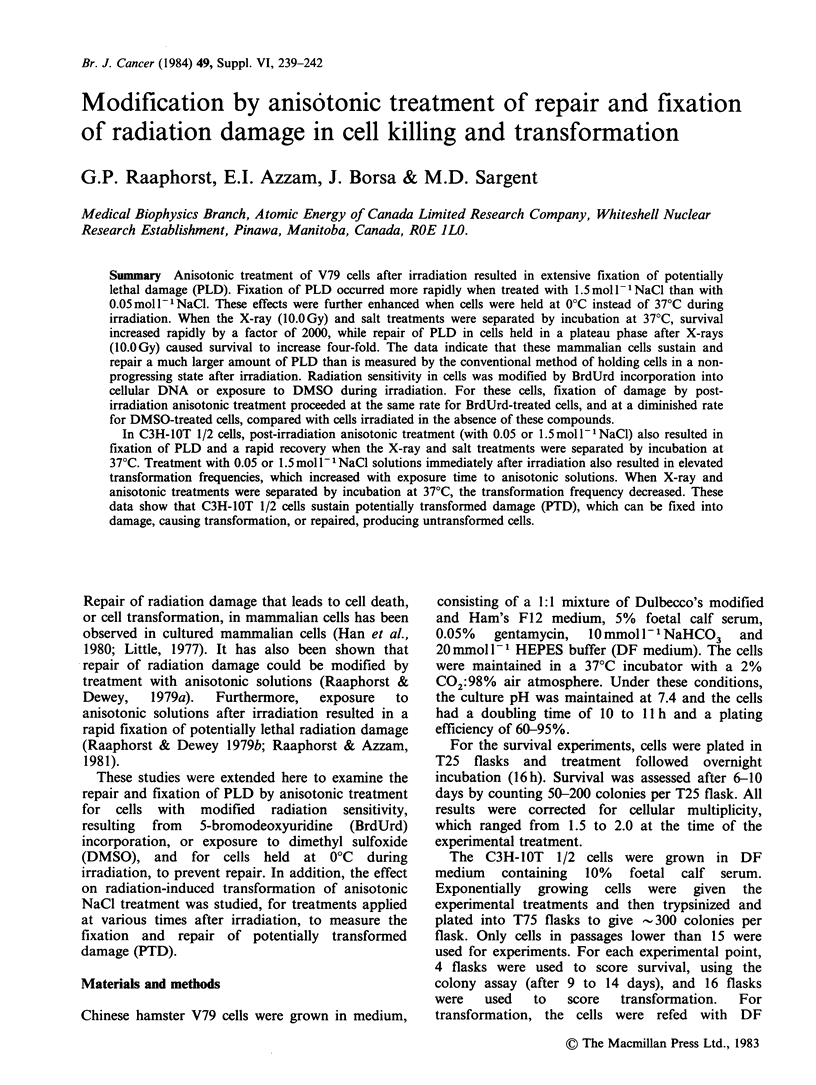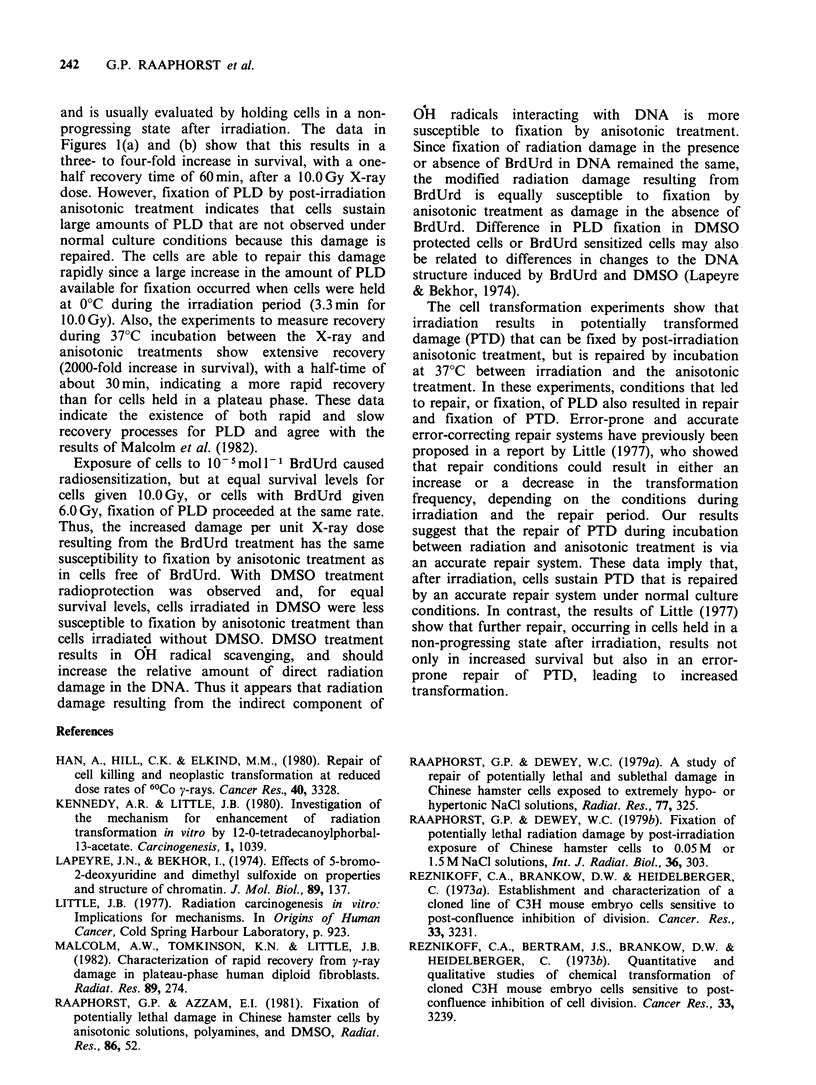Abstract
Anisotonic treatment of V79 cells after irradiation resulted in extensive fixation of potentially lethal damage (PLD). Fixation of PLD occurred more rapidly when treated with 1.5 mol l-1 NaCl than with 0.05 mol l-1 NaCl. These effects were further enhanced when cells were held at 0 degree C instead of 37 degrees C during irradiation. When the X-ray (10.0 Gy) and salt treatments were separated by incubation at 37 degrees C, survival increased rapidly by a factor of 2000, while repair of PLD in cells held in a plateau phase after X-rays (10.0 Gy) caused survival to increase four-fold. The data indicate that these mammalian cells sustain and repair a much larger amount of PLD than is measured by the conventional method of holding cells in a non-progressing state after irradiation. Radiation sensitivity in cells was modified by BrdUrd incorporation into cellular DNA or exposure to DMSO during irradiation. For these cells, fixation of damage by post-irradiation anisotonic treatment proceeded at the same rate for BrdUrd-treated cells, and at a diminished rate for DMSO-treated cells, compared with cells irradiated in the absence of these compounds. In C3H-10T 1/2 cells, post-irradiation anisotonic treatment (with 0.05 or 1.5 mol l-1 NaCl) also resulted in fixation of PLD and a rapid recovery when the X-ray and salt treatments were separated by incubation at 37 degrees C. Treatment with 0.05 or 1.5 mol l-1 NaCl solutions immediately after irradiation also resulted in elevated transformation frequencies, which increased with exposure time to anisotonic solutions.(ABSTRACT TRUNCATED AT 250 WORDS)
Full text
PDF



Selected References
These references are in PubMed. This may not be the complete list of references from this article.
- Han A., Hill C. K., Elkind M. M. Repair of cell killing and neoplastic transformation at reduced dose rates of 60Co gamma-rays. Cancer Res. 1980 Sep;40(9):3328–3332. [PubMed] [Google Scholar]
- Kennedy A. R., Little J. B. Investigation of the mechanism for enhancement of radiation transformation in vitro by 12-O-tetradecanoylphorbol-13-acetate. Carcinogenesis. 1980;1(12):1039–1047. doi: 10.1093/carcin/1.12.1039. [DOI] [PubMed] [Google Scholar]
- Lapeyre J. N., Bekhoe I. Effects of 5-bromo-2'-deoxyuridine and dimethyl sulfoxide on properties and structure of chromatin. J Mol Biol. 1974 Oct 15;89(1):137–162. doi: 10.1016/0022-2836(74)90167-3. [DOI] [PubMed] [Google Scholar]
- Malcolm A. W., Tomkinson K. N., Little J. B. Characterization of rapid recovery from gamma-ray damage in plateau-phase human diploid fibroblasts. Radiat Res. 1982 Feb;89(2):274–282. [PubMed] [Google Scholar]
- Raaphorst G. P., Azzam E. I. Fixation of potentially lethal radiation damage in Chinese hamster cells by anisotonic solutions, polyamines, and DMSO. Radiat Res. 1981 Apr;86(1):52–66. [PubMed] [Google Scholar]
- Raaphorst G. P., Dewey W. C. A study of the repair of potentially lethal and sublethal radiation damage in Chinese hamster cells exposed to extremely hypo- or hypertonic NaCl solutions. Radiat Res. 1979 Feb;77(2):325–340. [PubMed] [Google Scholar]
- Raaphorst G. P., Dewey W. C. Fixation of potentially lethal radiation damage by post-irradiation exposure of Chinese hamster cells to 0.5 M or 1.5 M NaCl solutions. Int J Radiat Biol Relat Stud Phys Chem Med. 1979 Oct;36(4):303–315. doi: 10.1080/09553007914551091. [DOI] [PubMed] [Google Scholar]
- Reznikoff C. A., Bertram J. S., Brankow D. W., Heidelberger C. Quantitative and qualitative studies of chemical transformation of cloned C3H mouse embryo cells sensitive to postconfluence inhibition of cell division. Cancer Res. 1973 Dec;33(12):3239–3249. [PubMed] [Google Scholar]
- Reznikoff C. A., Brankow D. W., Heidelberger C. Establishment and characterization of a cloned line of C3H mouse embryo cells sensitive to postconfluence inhibition of division. Cancer Res. 1973 Dec;33(12):3231–3238. [PubMed] [Google Scholar]


